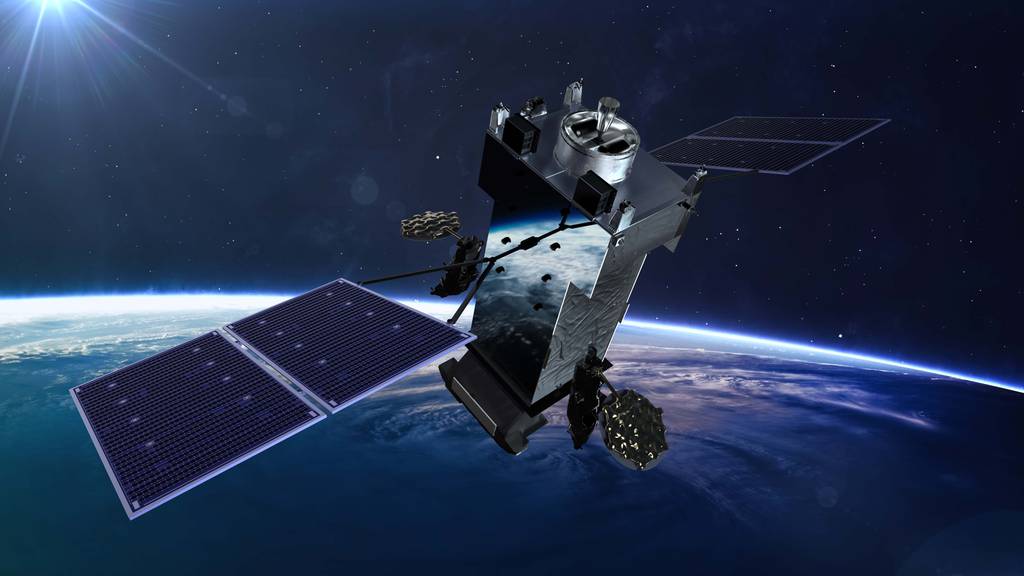WASHINGTON — The U.S. Space Force’s fiscal 2024 budget proposes cutting one of five satellites from its Next-Generation Overhead Persistent Infrared fleet, according to Chief of Space Operations Gen. Chance Saltzman.
Next-Generation Overhead Persistent Infrared satellites are meant to track ballistic missiles from polar and geosynchronous orbits, more than 22,000 miles above the Earth. The Space Force planned to build and launch three GEO-based and two polar-orbiting spacecraft, but Saltzman told the Senate Armed Services Committee today the service has changed its plans, reducing one GEO satellite from the mix.
The Space Force decided a “two-by-two” constellation — meaning two polar and two GEO satellites — would be “sufficient to ensure that the mission did not have any gaps,” he said.
Lockheed Martin is building the program’s GEO satellites under two contracts, awarded in 2018 and 2020, worth a combined $7.8 billion.
“We look forward to working with the Biden administration and Congress as the president’s fiscal year 2024 budget receives full consideration in the months ahead,” the company said in a statement.
The Defense Department released its fiscal 2024 budget request this week, which includes $30 billion for the Space Force. The service has yet to issue the programmatic details, so it’s not clear how cutting a satellite from the Next-Gen OPIR constellation will affect its spending plan in the coming year. However, officials said in a March 13 briefing the service is seeking a $243 million increase for the program’s polar satellites and ground system.
In last year’s proposal, the service projected it would need $8.3 billion for all Next-Gen OPIR segments between fiscal years 2024 and 2027. The first satellite is slated to launch in 2025.
The Space Force’s move to shrink the size of its Next-Gen OPIR program comes as the service is shifting its approach to tracking missile threats from space. The service has traditionally operated these satellites from GEO, but as Russia and China develop hypersonic missiles that can travel and maneuver at Mach 5 speeds, the Space Force wants to strengthen its defense against those weapons by launching smaller satellites to more diverse orbits.
A 2021 review led by the Space Warfighting Analysis Center recommended an expanded architecture that includes smaller satellites in low Earth orbit, about 1,200 miles above the planet, and medium Earth orbit, which is located between LEO and GEO.
The Space Development Agency and Space Systems Command are building those LEO and MEO spacecraft under an program called Resilient Missile Warning and Tracking. The Space Force’s fiscal 2024 budget includes $2.3 billion for the effort, $1 billion more than it requested in FY23.
While Next-Gen OPIR will have a smaller part to play in that future vision, Space Force officials say it is important to keep the program in place until the service proves its new satellites can provide global coverage.
Saltzman reiterated that message today, saying that because tracking missiles is a crucial mission, having continuity between old and new approaches is vital.
“It’s a pretty big technical shift,” he said. “We wanted to make sure that we, for this no-fail mission, had some hedges.”
Courtney Albon is C4ISRNET’s space and emerging technology reporter. She has covered the U.S. military since 2012, with a focus on the Air Force and Space Force. She has reported on some of the Defense Department’s most significant acquisition, budget and policy challenges.








